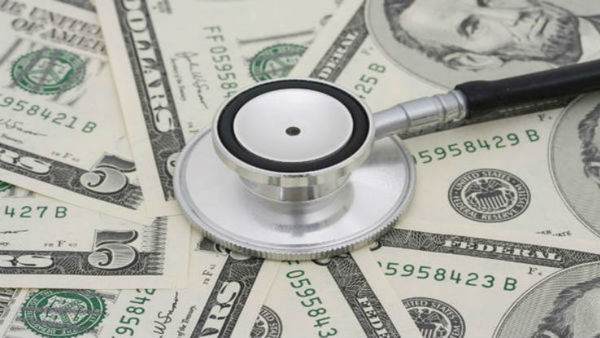 (Photo: Shutterstock)
(Photo: Shutterstock)
A hospital's cash prices and commercial negotiated rates tend to reflect a predetermined and consistent percentage discount from its chargemaster prices, a study reported in Health Affairs found.
"Hospitals have full discretion to set their chargemaster prices, which, on average, are more than four times the actual cost of care delivery," the study says. "Although commercial insurers negotiate discounted payment rates, it remains unclear whether negotiated rates are directly connected to hospitals' chargemaster prices."
Recommended For You
Analysis of price reports by more than 2,300 hospitals last fall found that:
- On average, cash prices and commercial negotiated rates were 64% and 58%, respectively, of the corresponding chargemaster prices for the same procedures at the same hospital and in the same service setting.
- Cash prices were lower than median commercial negotiated rates in 47% of instances and most likely so at hospitals with government or nonprofit ownership, located outside of metropolitan areas or located in counties with relatively high uninsurance rates or low median household incomes.
- Hospitals with stronger market power were most likely to offer cash prices below their median negotiated rates, while hospitals in areas where insurers had stronger market power were less likely to do so.
For shoppable hospital services, the study found nationwide evidence that both cash prices and commercial negotiated rates typically were calculated consistently in increments of a 5% discount from chargemaster prices.
"Moreover, most hospitals set cash prices as a fixed discount from their chargemaster prices across all services," the study says. "This finding contributes to the literature on cash prices and extends a case study that found that hospitals set cash prices at a fixed proportion of their chargemaster prices for all services. Policymakers and payers interested in improving hospital affordability should recognize the important role played by the chargemaster in influencing hospital commercial prices."
Data showed that some self-insured employers pay more than cash prices.
"Employers may wish to consider using the cash price information as an input in their negotiations with insurers or directly contracting with providers with low cash prices and steering employees to them," the study says. "Health savings accounts, for example, might facilitate the implementation of this option."
Researchers also pointed to a need for greater transparency compliance.
"Twenty-one months after the implementation of the hospital price transparency rule, nearly half of the general acute-care hospitals required to do so still had not disclosed most of their prices for mandated shoppable procedures," they say. "More-rigorous enforcement may be necessary to achieve broad compliance and realize the regulation's price-containing potential."
© Touchpoint Markets, All Rights Reserved. Request academic re-use from www.copyright.com. All other uses, submit a request to [email protected]. For more inforrmation visit Asset & Logo Licensing.







